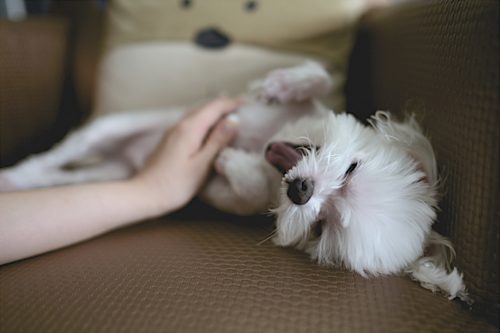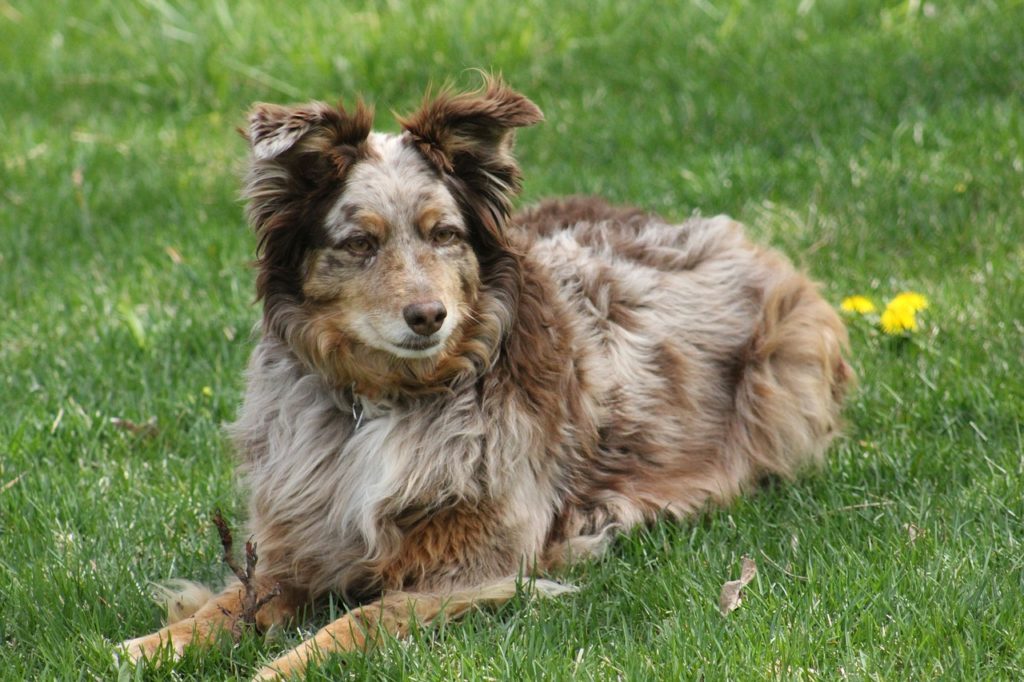Feeding your dog the right food is an integral part of being a dog owner, but even once you have found the right food for your dog, there are a number of other questions you must answer to make sure that your dog is getting the nutrition it needs. Many pet owners wonder, “How much should I feed my dog?”and “How often should I feed my dog?” These can be tricky questions to answer since the answer is based on a multitude of different factors. If you feed your dog too little, they will develop nutritional deficiencies that can be dangerous to his health. If you feed your dog too much, he will eventually become overweight or obese and will develop health problems as a result. To find the right amount that your dog should be fed each day and how often he should be fed, it is necessary to understand the different factors that affect your dog’s body and metabolic processes. Here is an introductory guide to help you get the information you need to make an informed decision about how much and how often you should feed your dog.
Deciding How Much to Feed Your Dog
Unfortunately, there is no simple way to determine what the right amount of food for your dog to eat each day is. The reason for this inherently difficult process is that there is a tremendous amount of variance from one dog to the next, which makes generalized tables based solely on weight unreliable as the only method for determining the right amount of food. Many brands of dog food come with a feeding guide on their food that recommends an amount of food per day in relation to the dog’s weight. Below is an example of a feeding guide:
| Weight of Dog | Amount Per Day |
| 5 lb (2,3 kg) | ½ cup (50 g) – ⅝ cup (65 g) |
| 10 lb (4,5 kg) | ¾ cup (75 g) – 1 cup (100g) |
| 20 lb (9,1 kg) | 1 ¼ cups (130 g) – 1 ¾ cups (180 g) |
| 40 lb (18 kg) | 2 ¼ cups (230 g) – 3 cups (305 g) |
| 60 lb (27 kg) | 3 cups (305 g) – 4 cups (410 g) |
| 80 lb (36 kg) | 3 ⅔ cups (375 g) – 5 cups (510 g) |
| 100 lb (45 kg) | 4 ¼ cups (435 g) – 6 cups (610 g) |
These amounts of foods are representative of the total amount of food recommended for the dog to be consuming over a period of twenty-four hours. While this type of weight-based feeding guide is a useful starting point, there are a number of other factors that affect how much your dog should be eating each day, including his age, breed, activity level, how many times per day he is eating, his current weight, the type of food he is being fed, and more. Below, you will delve into a handful of these elements.
Age
One of the most important factors to take into consideration when determining how much to feed your dog is his age. The metabolism of a dog can change tremendously over his lifetime, just as metabolic processes shift in human beings as they age. If you are feeding a puppy, he will require more food each day than an adult dog would because they are growing. If your dog is growing into a large breed, such as a German Shepherd, then he can require much more food than a Pomeranian puppy would, for example. Just as children require additional nutrients and food during the years their bodies are growing, so do dogs. As a dog begins to grow older, however, you may need to cut down on the amount of food it is consuming each day. As a dog ages, its metabolism will likely slow down, which means that if it is continually consuming the same amount of food but burning through it less quickly, its body will store the extra food as fat, which can present dangerous health conditions if the dog becomes overweight or obese. It is important to consult with your veterinarian to see what they recommend for a daily feeding amount based on what age your dog is and adjust his food intake accordingly.
Breed
The breed is another important factor to keep in mind when deciding how much food to feed your dog each day. Some dogs are known for being much more high energy, which subsequently means that they often burn a higher number of calories per day than a sedentary breed. This varies from dog to dog, but should be taken into consideration when making a decision. For example, some giant breeds of dogs will be fed less each day than is recommended for their weight simply because they do not have the metabolism to burn that amount of food and weight gain can pose additional risks to their health.
Activity Level
Activity level will be one of the largest determinants of how much food your dog will need each day. The amount of exercise your dog gets each day can significantly change how much food he will require to maintain a healthy weight. For example, a dog that only does a short walk outside each day will not require nearly as much food as a dog that goes for a five mile run each day. Just as with human beings, if your dog is exercising a significant amount but is eating an amount of food that would support a sedentary dog, he will begin to develop a calorie deficit each day that will cause him to lose weight. If you are aiming to maintain your dog at a healthy weight and they are doing a moderate to high level of activity, his food will need to be increased accordingly to make sure that he is able to maintain his weight.
On the other hand, if your dog is living a fairly sedentary lifestyle and rarely exercises, his food will likely need to be decreased so that he is not consuming calories in excess of what he is burning, which will result in weight gain. If a dog is eating more calories each day than their body is burning, their body will begin to turn the excess calories into fat, which can be dangerous to their health over time. If a dog becomes obese, they will likely develop health problems as a result. Health problems commonly associated with obesity in dogs include musculoskeletal issues like intervertebral disk disease, osteoarthritis, and cruciate ligament ruptures, Cushing’s disease, some types of cancer, skin disorders, and congestive heart failure.
To make sure that your dog is eating the right amount of food in relation to its exercise level, it will likely involve some experimenting and trial and error to find the right amount. If your dog engages in a moderate amount of exercise each day, slightly increase his food and monitor his weight each week to see if he is holding steady at a healthy weight or continuing to lose weight. If he is continuing to lose weight, keep incrementally increasing the amount of food he is eating each day until his weight stabilizes. If your dog is sedentary and is beginning to gain weight, incrementally decrease the amount of food he is receiving and monitor his weight to see if he begins losing weight. Once he is back to a healthy weight, you will then need to increase the amount of food he is receiving incrementally until he is maintaining a healthy week and his weight is stable from week to week. This can be a tedious process, but it will be beneficial for your dog to be at a healthy weight that is not constantly fluctuating. If your dog’s lifestyle changes and his activity level increases or decreases, you will need to adjust accordingly to make sure he is able to maintain a healthy weight.
 Type of Food
Type of Food
The type of food your dog is eating will also have an effect on how much food he should be receiving each day. You will want to make sure your dog has the right balance of nutrients each day to support a healthy lifestyle, and to do so accurately you will need to analyze the ingredients in his food to see if they will be receiving enough carbohydrates and proteins to support a healthy immune system, organ function, and immune system. In some cases, your dog may require additional supplements outside of his daily food to balance his diet. Be sure to invest time into researching the food your dog is eating, its ingredients, and paying close attention to how your dog reacts to his food to make sure it is a good fit.
Deciding How Often to Feed Your Dog
Deciding how often you will feed your dog will also play a role in how much food you should feed your dog at each feeding during the day. Many adult dogs are fed twice per day, but there is a multitude of different approaches to dog feeding schedules that are based on a diverse set of variables. Below are a few of the most common methods for how often you should feed your dog.
Feeding a Puppy
Puppies often require a different feeding schedule than an adult dog because they are growing a tremendous amount in a short amount of time, which burns an excess amount of energy. As a result, they will rely much more heavily on food throughout the day to make sure they are not depleted of the nutrients they need to continue a healthy growth cycle. Many pet owners will feed their puppies three times per day to support their growth. If you will be at work and unable to feed him in the middle of the day at a set time, you can also leave out a bowl of food that is filled only with the amount of food he would have received at his middle of the day feeding, which prevents him from overeating but also allows him to eat as he is hungry throughout the day.
Portion Control
Many pet owners rely on the portion control method to make sure that their dog receives the nutrients they need while also maintaining a steady weight. With the portion control method, you will determine the ideal weight for your dog based on an analysis of the factors above. Once you have determined his ideal weight and how much food they will require each day to support that weight, you will then determine how often you want to feed him throughout the day. Two times a day is one of the most common feeding schedules since it accommodates a traditional work schedule and makes sure that your dog’s metabolism will continue to be working to break down food throughout the day. Some pet owners may prefer to feed their dog one or three times a day based on their individual needs or schedules.
Letting Your Dog Decide
Some pet owners let their dog decide how often they should eat per day. If a dog is at a healthy weight and does not show a tendency to overeat, then a free-choice feeding method may be the right option for them. This method is similar to a human eating method known as intuitive eating, which is based on the premise that your body knows when it needs to eat and if you follow its promptings in a balanced way then you will maintain a healthy weight. There are several potential downsides to this feeding schedule. To let your dog decide on its own how often it should eat, you will need to leave food out for your dog all day. This can potentially attract insects, rodents, and raccoons, particularly if your dog is outside during the day. This can also be challenging as a dog may overeat during the day if left to its own devices, which will result in weight gain. Another potential downside is that dogs who are protective over their food may have difficulty following this eating method if there is another dog or animal around, which may prompt them to act out towards the other animal in an aggressive manner.




